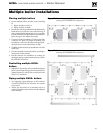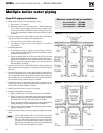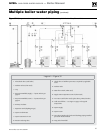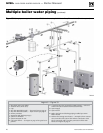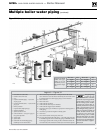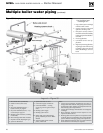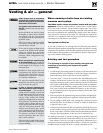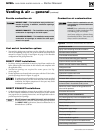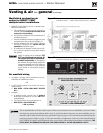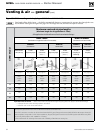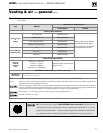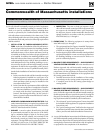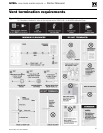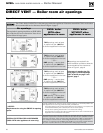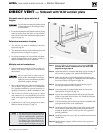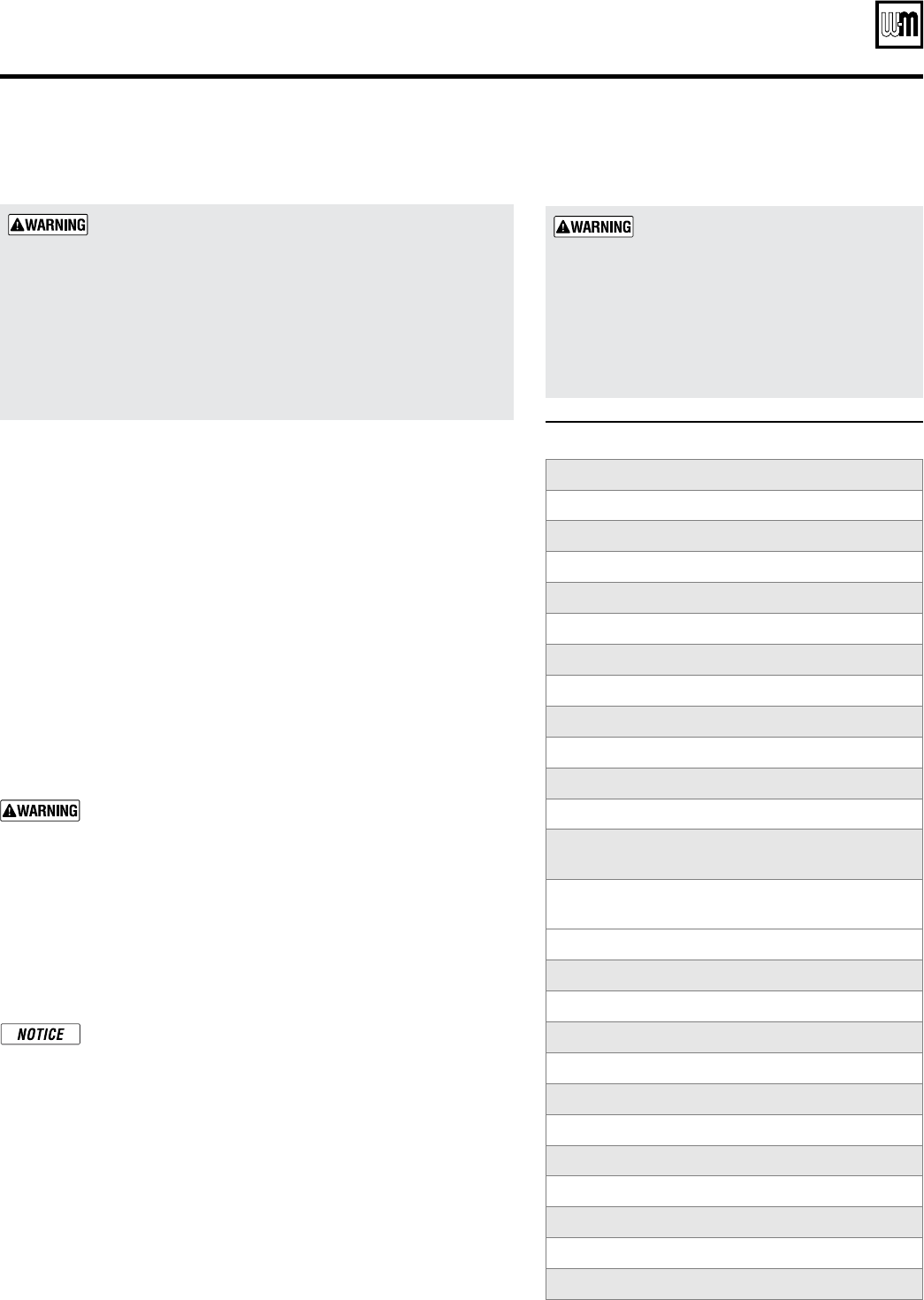
Part number 550-142-054/0411
GV90+ gas-fired water boiler — Boiler Manual
30
Venting & air — general (continued)
Provide combustion air:
DIRECT VENT — The installation must provide com-
bustion air piping. In addition, ventilation openings
may be required.
DIRECT EXHAUST — The installation must provide
combustion air openings to the boiler space.
ALL APPLICATIONS — The installation must provide
combustion air openings as needed for other appli-
ances in the space.
Vent and air termination options
1. Vent and air piping must terminate out the sidewall or through the
roof of the building, using only one of the methods described in this
manual. See Figure 39, page 32 and Figure 40, page 33 for allowable
configurations and piping materials.
DIRECT VENT installations
1. For direct venting, combustion air must be piped from outside to the
boiler, following the instructions in this manual, and compliant with
all applicable codes.
2. Ventilation openings are required for some spaces. See Fig-
ure 42, page 36.
3. If other appliances are located in the same space with the GV90+ boiler,
provide openings shown in Figure 42, page 36.
If combustion and ventilation air openings are not provided
as directed above and the room does not have adequate
ventilation, the higher temperature in the space may result
in reduced component life.
DIRECT EXHAUST installations
1. Combustion and ventilation air must be provided in the boiler room
on direct exhaust installations. Follow all instructions in this manual
(see page 49 for air opening instructions) and all applicable codes to
provide required air openings.
DO NOT sidewall vent DIRECT EXHAUST APPLICATIONS
at altitudes above 5,500 feet. Sidewall venting is only allowed
for DIRECT VENT applications (ducted combustion air) at
altitudes above 5,500 feet.
Combustion air contamination:
Ensure that the combustion air will
not contain any of the contaminants
in Figure 36
.
DO NOT place combustion air supply
openings or intake terminations near
a swimming pool, for example.
Avoid areas subject to exhaust fumes
from laundry facilities. These areas will
always contain contaminants.
Figure 36
Corrosive contaminants and sources
Products to avoid
Spray cans containing chloro/fluorocarbons
Permanent wave solutions
Chlorinated waxes/cleaners
Chlorine-based swimming pool chemicals
Calcium chloride used for thawing
Sodium chloride used for water softening
Refrigerant leaks
Paint or varnish removers
Hydrochloric acid/muriatic acid
Cements and glues
Antistatic fabric softeners used in clothes dryers
Chlorine-type bleaches, detergents, and cleaning
solvents found in household laundry rooms
Adhesives used to fasten building products and
other similar products
Excessive dust and dirt
Areas likely to have contaminants
Dry cleaning/laundry areas and establishments
Swimming pools
Metal fabrication plants
Beauty shops
Refrigeration repair shops
Photo processing plants
Auto body shops
Plastic manufacturing plants
Furniture refinishing areas and establishments
New building construction




